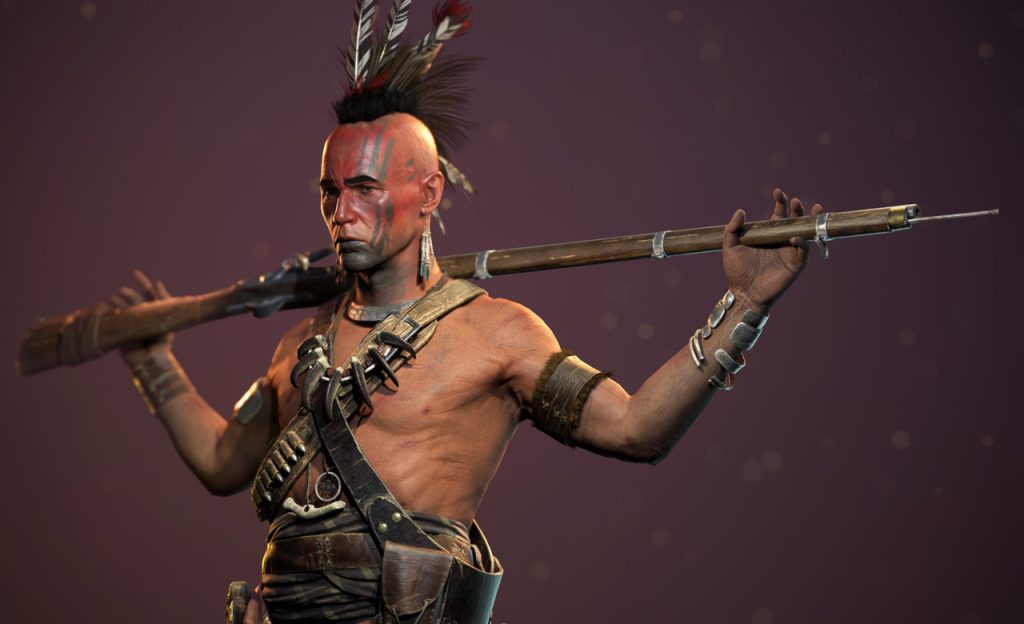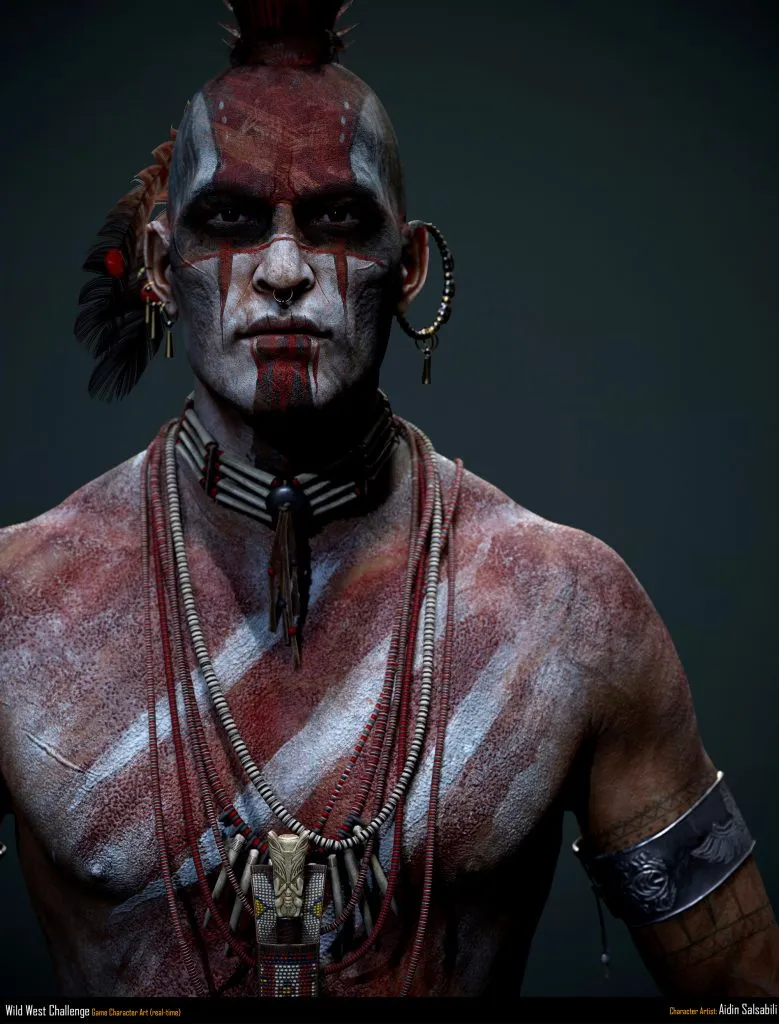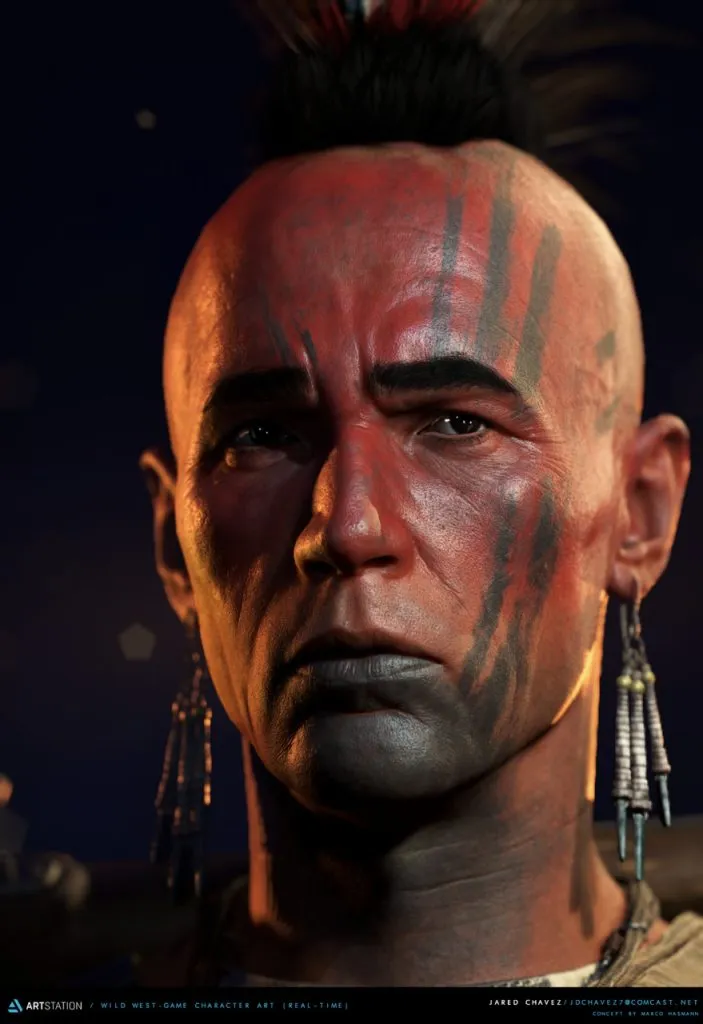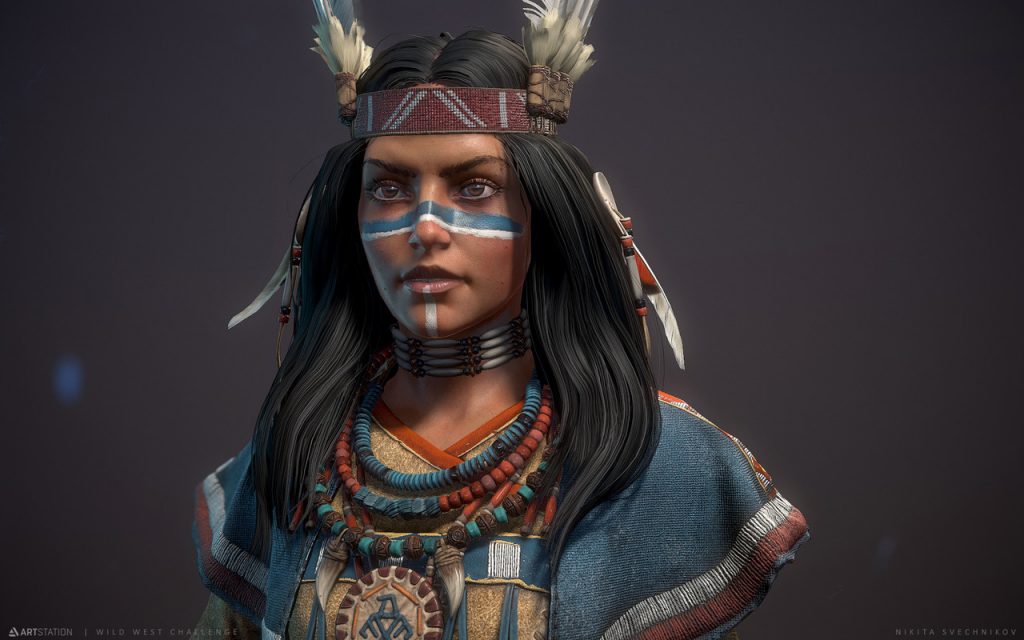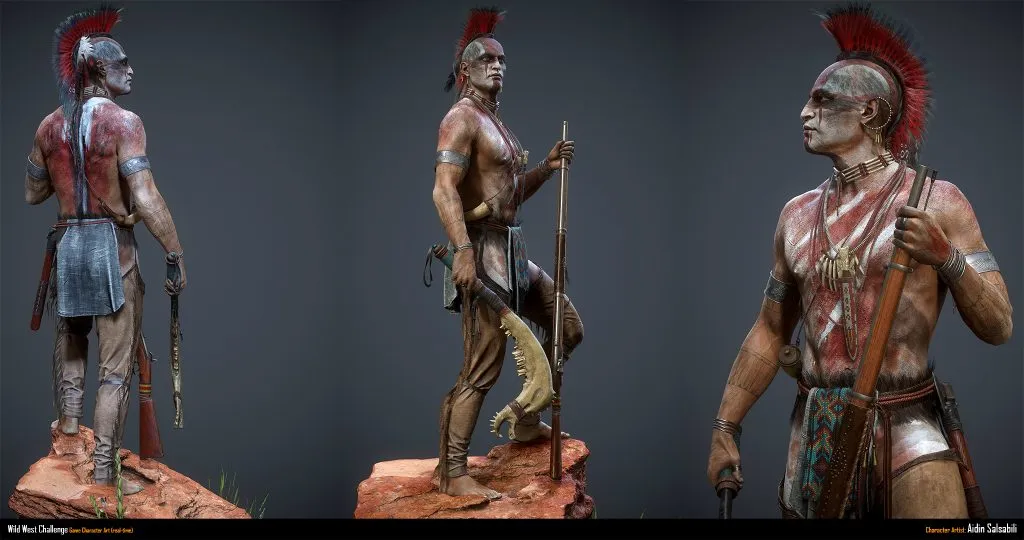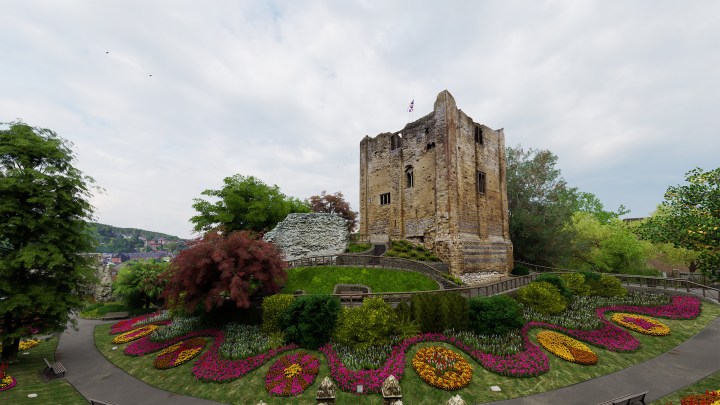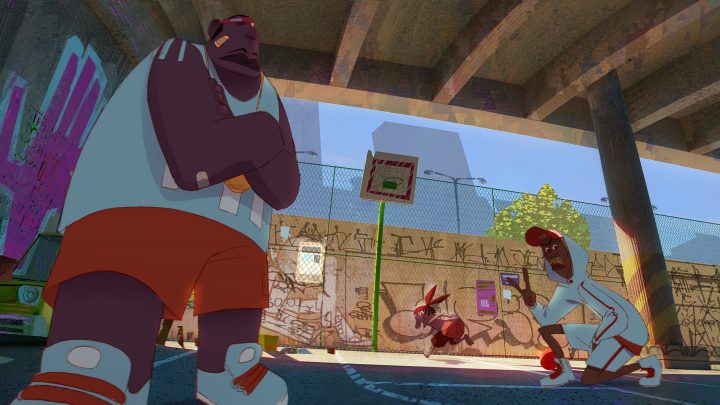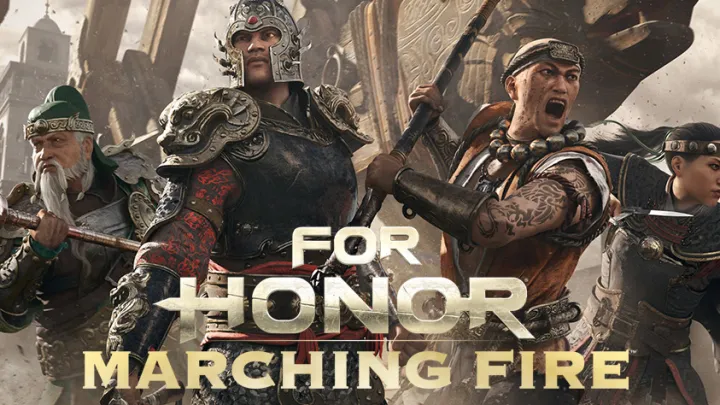Wild West Challenge: Game Character Winners Interview
For the Game Character portion of the Wild West Challenge, participants were given 8 weeks to create one fully rendered character from the Old West. Like with previous ArtStation Community Challenges, competitors in Phase 2 had the option of using one of the concepts from the first phase or creating an entirely new concept of their own.
Browse all the Game Character Art entries from the Wild West Challenge.
In this interview, the top 3, Jared Chavez, Nikita Svechnikov and Aidin Salsabili, share their experience and process for their winning entries.
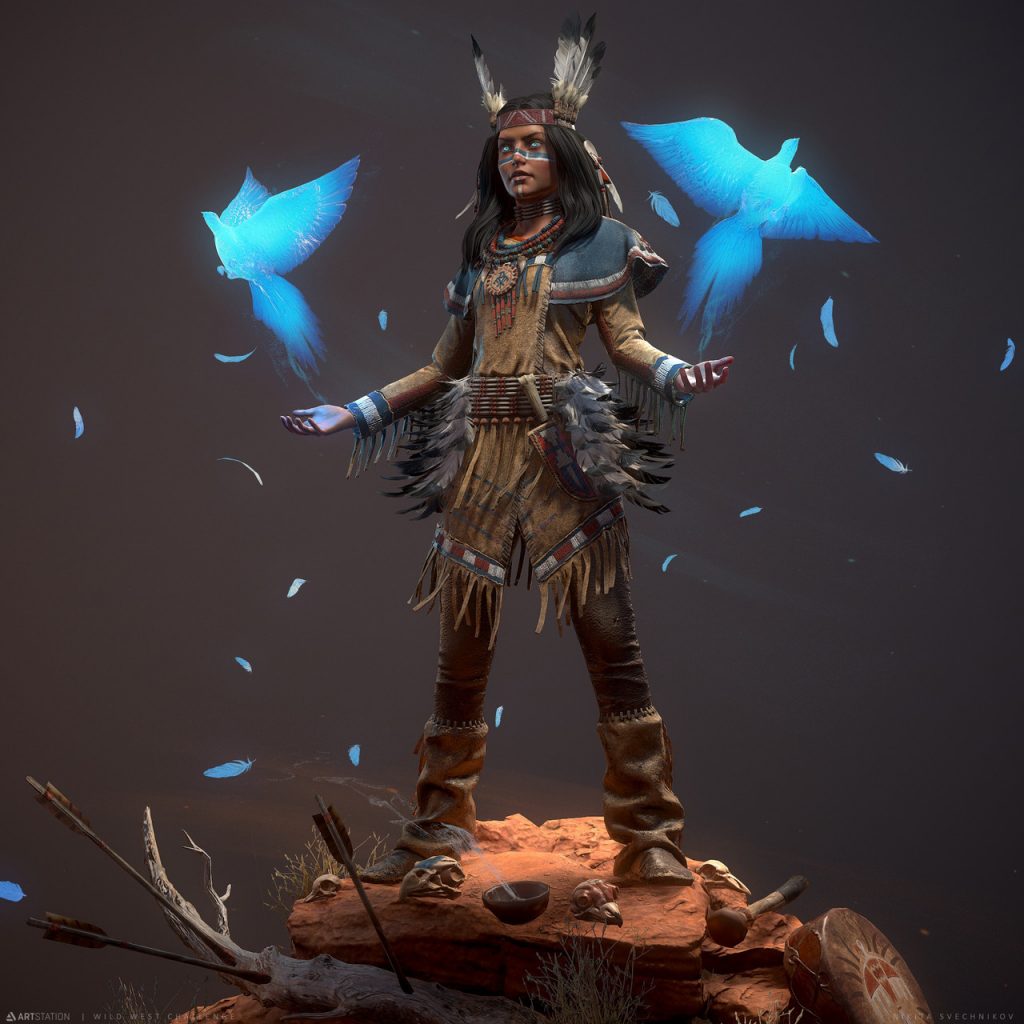 Tell us about your concept for your piece.
Tell us about your concept for your piece.
Jared: For my concept I went with the “Mean Lone Wolf” by Marco Hasmann. I went with this concept because Native American culture is something very prevalent in the city that I live in, so it was something that hit close to home. Also, I’ve always wanted to do a Native American style character and this seemed like a great opportunity to give it a shot.
Nikita: I followed Phase 1 and there were a lot of great concepts. I chose a concept by Nikita Volobuev because it seems the most appealing to me. Most of the time I work with stylization so I decided to do something different to challenge myself and try to work in a realistic manner.
Aidin: From the moment I saw the challenge’s title, I thought a Native American character would be a great choice. I wanted to have a realistic character with a historically accurate look that was also ready for today’s games. I saw lots of great concepts in the first phase of the challenge but in the end, I decided to design my own character. I spent a lot of time researching the Native American tribes and culture and in the end, I chose a warrior from the “Sauk” tribe. The Sauk warriors looked sharp, fast, and strong which was exactly what I needed for my character. He could easily be the main character in an action adventure game!
Tell us about the strategy and process for creating your piece.
Jared: Well, my first priority for this piece was to have it completed by the end of the challenge. I made sure that I set up a timeline on when I wanted to have milestones completed, and I stuck pretty close to that in order to make sure I had a finished piece. In terms of process, I started by gathering a large amount of reference to get a good starting point. After that I dove right into Zbrush to get things blocked out. Then I kept refining to get the high poly jumping between Maya and Zbrush until I had a final character. Retopo was done with Maya. For texturing, I ran a first pass on the character in Painter. After that there was a lot of back and forth between Painter and Marmoset until I was happy with how the materials and textures were reading.
Nikita: Generally, I used a fairly standard pipeline. I started by searching for all possible references related to the Native Americans theme and then blocking common elements. I did detailed work on high poly in Zbrush, retopology with Topogun, UVs in 3ds max, texturing in Substance Painter and final render in Marmoset Toolbag.
Aidin: I have a regular workflow for my character creation but sometimes I change the priorities and adjust timing based on the project. After choosing the subject, I always start by research. For this challenge, I saw and read about different tribes. You can find important information about their fighting techniques, weapons, tools and etc. So I made a list of all things that need to be done. With that list, I can go after detail reference photos and plan the design and implementation. These were my steps:
- Sculpting block mesh – face and body(ZBrush)
- Checking scale-size, form, anatomy
- Skin details (Mari or ZBrush)
- The base of the clothes (Marvelous Designer)
- Making the high poly of the assets, testing size (Maya or ZBrush)
- Add more details on high poly clothes and assets ( ZBrush)
- Creating low poly (Maya, Topo-Gun)
- Unwrap (unfold)
- Baking (Marmoset Toolbag)
- Texturing – Preparing texture pack (Substance Painter, Photoshop)
- Adjusting shaders, lightings, post product setting and rendering (Marmoset Toolbag)
What was the most challenging part?
Jared: For me I think the hardest part of this project was doing my best to plan out the character and how I was going to work within the restraints and budgets set up. My character had a lot of small jewelry pieces that added up quickly to the tri count, as well as taking up texture space. I had to be smart about how I wanted to spread my tris, and how to reuse things in order to not waste any texture space.
Nikita: The most challenging part was to interpret the concept in 3D, understand how the details should interact with each other and what they consisted of. The hair wasn’t looking good to me so I kept refining it until the final render.
Aidin: I enjoyed every second of this project but there are always challenges. Painting his face and body was challenging because seven different layers with different roughness needed to match together.
What other submissions stood out to you?
Jared: I kept an eye on a lot of the pieces. It was really cool to see them all from start to finish. Nikita Svechnikov created a really amazing, and fun character. Aidin Salsabili really had some amazing realism to his piece. Guillame Mahieu is a colleague from Dekogon where we primarily focus on props, so seeing him flex some character muscles was awesome. There was some really inspiring and amazing work from this challenge!
Nikita: I’ve followed many submissions since phase 1. There were lots of great works and it’s great that many people were able to finish their pieces. Amongst those in the Game Character challenge, the most memorable one to me was Aidin Salsabili’s since he used his own concept and the quality of his work is incredible.
Aidin: I think Jared Chavez was great. He worked on a concept that I really loved. What he has done is magnificent. It was really interesting that the top three entries had Native American designs!
What were your learning takeaways from this challenge?
Jared: I would say my biggest take away from the challenge would be to really push yourself. Take it as a chance to learn something new, push yourself outside your comfort zone. Meet new people and get to know them, and learn from their work! Most of all remember to have fun, because that is what the challenges are for. Do something you enjoy, and it will show in the final piece!
Nikita: Since I’ve worked quite a bit with realistic characters before, I’ve learned a lot of useful tips in detailing and texturing.
Aidin: Participating in a challenge with this many great artists was truly a great opportunity for me. I learned a lot about my strengtsh and weaknesses throughout the challenge. Having great artists comment about your art is a blessing. I made a lot of friends who I enjoyed talking to and inspired by their great work.
Browse all the Game Character Art entries from the Wild West Challenge.
